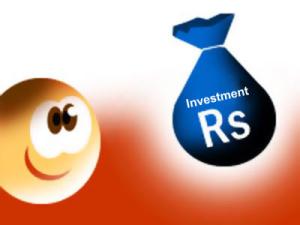 | « Back to article | Print this article |
Why you should not prepay your home loan
This will be one of the most technical articles till date. So to make it read better let's make it simple by taking an example.
Rahim Ali, 34, has taken a home loan from a leading finance company and is paying an equated monthly instalment (EMI) of Rs 24,000 on loan tenure of 20 years.
He is overwhelmed by the interest amount that he paid in the third year and decides to prepay the loan at the end of the fourth year.
Let us take a moment here to understand how financial institutions charge EMIs on the loan you avail from them. As you will see in the table in the next slide your EMI amount in the initial years comprises of higher interest amount and lower principal amount.
As time passes by the principal component increases and the interest component decreases.
Presha Investments guides budding investors understand the complex financial details of various investment instruments.
Why you should not prepay your home loan
Here are the details of Rahim's loan:
Loan amount: Rs 24 lakh
Rate of interest: 10.5 per cent per annum
Installment amount per month (EMI): Rs 24,299
Annual payment made through EMIs = Rs 24,299*12 = Rs 2,91,588
Note how the interest paid goes on decreasing and principal amount increases as time passes by. For instance in the first year of loan repayment Rahim paid Rs 2,52,000 as interest and Rs 39,588 as the principal amount out of his total annual payment of Rs 2,91,588.
However, if he were to continue repaying his loan (we have assumed that he decides to pay his loan off at the end of fourth year) then his interest amounts to Rs 52,760 and principal at Rs 2,38,828.
Now let's look at his yearly amortisation (Detail of his payment and its components like interest and principal) schedule:
| Year (A) | Principal Outstanding (B) | Interest paid in year A | Principal paid in year A (D) | Total EMI Paid in year A (E) = C+D | Closing balance of principal (F) = B-D |
| 1 | Rs 24,00,000 | Rs 2,52,000 | Rs 39,588 | Rs 2,91,588 | Rs 23,60,412 |
| 2 | Rs 23,60,412 | Rs 2,47,843 | Rs 43,745 | Rs 2,91,588 | Rs 23,16,667 |
| 3 | Rs 23,16,667 | Rs 2,43,250 | Rs 48,338 | Rs 2,91,589 | Rs 22,68,329 |
| 4 | Rs 22,68,329 | Rs 2,38,175 | Rs 53,413 | Rs 2,91,590 | Rs 22,14,916 |
| 5 | Rs 22,14,916 | Rs 2,32,566 | Rs 59,022 | Rs 2,91,591 | Rs 21,55,894 |
| 6 | Rs 21,55,894 | Rs 2,26,369 | Rs 65,219 | Rs 2,91,592 | Rs 20,90,675 |
| 7 | Rs 20,90,675 | Rs 2,19,521 | Rs 72,067 | Rs 2,91,593 | Rs 20,18,608 |
| 8 | Rs 20,18,608 | Rs 2,11,954 | Rs 79,634 | Rs 2,91,594 | Rs 19,38,974 |
| 9 | Rs 19,38,974 | Rs 2,03,592 | Rs 87,996 | Rs 2,91,595 | Rs 18,50,978 |
| 10 | Rs 18,50,978 | Rs 1,94,353 | Rs 97,235 | Rs 2,91,596 | Rs 17,53,743 |
| 11 | Rs 17,53,743 | Rs 1,84,143 | Rs 1,07,445 | Rs 2,91,597 | Rs 16,46,298 |
| 12 | Rs 16,46,298 | Rs 1,72,861 | Rs 1,18,727 | Rs 2,91,598 | Rs 15,27,571 |
| 13 | Rs 15,27,571 | Rs 1,60,395 | Rs 1,31,193 | Rs 2,91,599 | Rs 13,96,378 |
| 14 | Rs 13,96,398 | Rs 1,46,620 | Rs 1,44,968 | Rs 2,91,600 | Rs 12,51,410 |
| 15 | Rs 12,51,410 | Rs 1,31,398 | Rs 1,60,190 | Rs 2,91,601 | Rs 10,91,220 |
| 16 | Rs 10,91,220 | Rs 1,14,578 | Rs 1,77,010 | Rs 2,91,602 | Rs 9,14,210 |
| 17 | Rs 9,14,210 | Rs 95,992 | Rs 1,95,596 | Rs 2,91,603 | Rs 7,18,614 |
| 18 | Rs 7,18,614 | Rs 75,454 | Rs 2,16,134 | Rs 2,91,604 | Rs 5,02,480 |
| 19 | Rs 5,02,480 | Rs 52,760 | Rs 2,38,828 | Rs 2,91,605 | Rs 2,63,652 |
| 20 | Rs 2,63,652 | Rs 27,936 | Rs 2,63,652 | Rs 2,91,606 | Rs 0 |
| Total | Rs 34,31,760 | Rs 23,99,730 | Rs 58,31490 |
Say he makes prepayment at the end of fourth year. The table below shows the amount Rahim would save:
| Principal paid at the end of the 4th year | Rs 2,44,106 |
| Principal outstanding (Prepayment amount) | Rs 22,14,916 |
| Years remaining | 16 |
| EMI saved | Rs 46,65,408 = Rs 2,91,588*16 |
Now presuming that he would have taken help from a financial advisor and instead of prepaying the loan he had invested the principal amount unpaid at the end of fourth year (Rs 22,14,916) in say an Index Fund as bulk investment it would have yielded 26.85 per cent (compounded)* return. Rahim would have made Rs 12 crore even after deducting amount saved in EMIs (Rs 46,65,408) if he would have chosen to invest in an index fund over prepaying.
| Principal invested | Rs 22,14,916 |
| Average rate of return on Index Fund (CAGR)* | 26.85 per cent |
| Years invested | 16 |
| Amount* | Rs 12,47,13,626 |
I am sure a lot of readers would wonder if at all it is always possible to earn returns of 26.85 per cent. While this may not be possible always Rahim would have made Rs 1.01 crore even if his investments had made profits at a conservative estimate of around 10 per cent compounded annually as shown in the table below.
| Principal invested | Rs 22,14,916 |
| Average rate of return on Index Fund (CAGR)* | 10 per cent |
| Years invested | 16 |
| Amount* | Rs 1,01,77,479 |
Why you should not prepay your home loan
To every rule there is an exception though.
Here's when it would make sense for you to prepay your home loan:
- When you are expecting uncertainty in your source of income with which you are making your EMI payment
- When you are getting a better re-financing deal in spite of the prepayment penalty
- When the loan tenure is less (say two years) then the risk is high in markets and there is less compounding
Having made the case for non-prepayment let me tell you that you might be an exception to the rule. Let your financial planner decide what's best for you.
Notes:
1. For calculating returns we have taken an Index Fund from SBI which is the oldest private fund house; this is just an example and not a recommendation
2. Index Funds are less risky than diversified equity and sector funds
3. In the above calculations we have not considered the benefits of deduction one can get under Section 80C on payment of principal and interest for continuing the housing loan
4. The returns calculated in the tables in slide 2 are based on the formula of future value.



